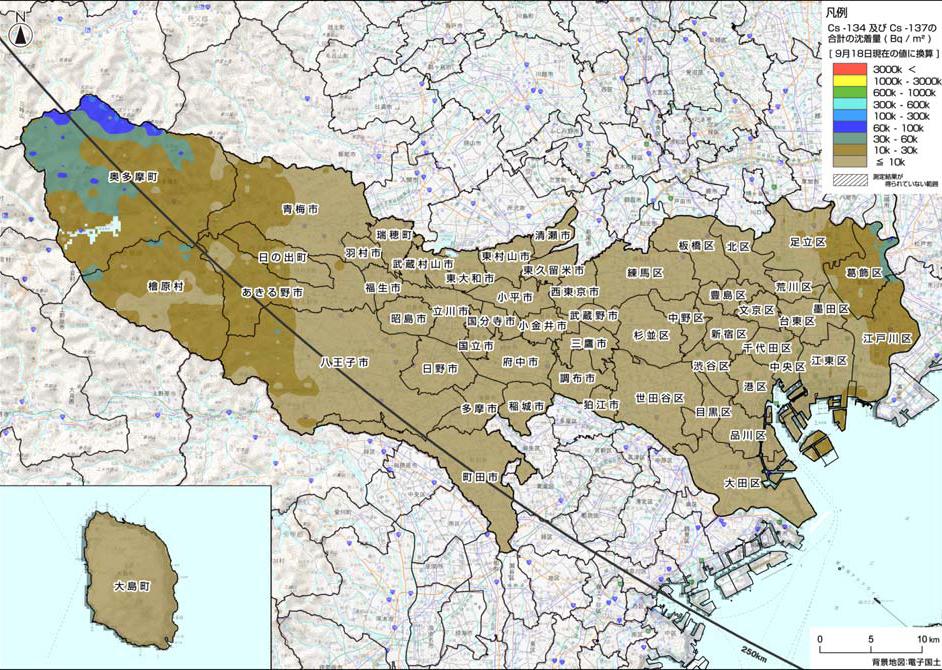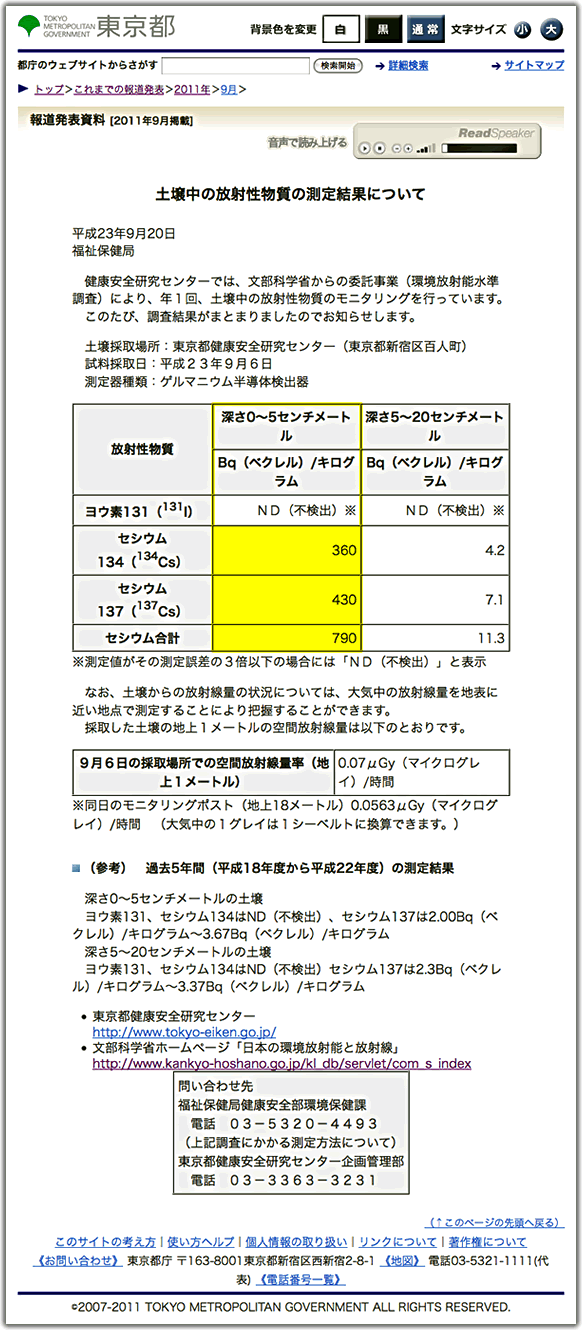– Tokyo Metropolitan Government Measures Soil Contamination in Shinjuku (EX-SKF, Oct. 8, 2011):
And it is higher, much higher than the Ministry of Education’s aerial survey indicates.
First, to recap, according to the just released Ministry of Education’s aerial survey of radioactive cesium deposition in Tokyo, most of Tokyo has less than 10,000 becquerels/square meter of radioactive cesium, with the exception of the western-most Okutama and the eastern special wards (“ku”) bordering Chiba Prefecture to the east.
Now, it turns out that the Tokyo Metropolitan government, who is not so eager to measure anything radioactive since March 11, was doing its annual survey of soil contamination in Shinjuku and quietly released the data on September 20.
The soil sample was taken at Tokyo Metropolitan Institute of Public Health in Hyakunin-cho, Shinjuku-ku, as it has always been done. (That’s where the official air radiation level is monitored every day for Tokyo.)
For the last 5 years, radioactive iodine and cesium-134 were not detected, and cesium-137 was 2 to 3 becquerels per kilogram.
Now, this year, the numbers for the soil from the surface to 5 centimeters deep were:
- Iodine-131: ND
- Cesium-134: 360 becquerels/kg
- Cesium-137: 430 becquerels/kg
- Total cesium: 790 becquerels/kg
To convert from “per kilogram” to “per square meter”, Japan’s Nuclear Safety Commission uses the factor of 65. The total cesium per square meter in Shinjuku therefore is: 51,350 becquerels per square meter.
Even if you just take cesium-137 (for comparison purpose), 430 becquerels/kg translates to 27,950 becquerels/square meter.
The Tokyo Metropolitan government also found cesium-134 and cesium-137 in the soil between 5 and 15 centimeters deep. For the past 5 years, iodine-131 and cesium-134 were ND, and cesium-137 was 2 to 3 becquerels/kg.
But this year:
- Cesium-134: 4.2 becquerels/kg
- Cesium-137: 7.1 becquerels/kg
- Total cesium: 11.3 becquerels/kg
However, true to form, the Tokyo Metropolitan government says it is in agreement with the Ministry of Education’s survey of air radiation level. The government says the air radiation at the sample location is not that high (0.07 microgray/hr) therefore no decontamination of a wide area will be necessary. (Mr. Governor, we are talking about soil deposition here, not the air radiation level.)
The air radiation the Institute measures at 18 meters off the ground was 0.0563 microgray/hr that day, according to the announcement. The Tokyo Metropolitan government uses microgray as equivalent to microsievert.
It goes to show that the aerial survey with 300 to 600 meter radius and averaging out the numbers doesn’t locate high radiation hot spots in the cities like Tokyo or Yokohama. Or anywhere else for that matter. And this Shinjuku location is not considered to be particularly hot.
Here’s the screen capture of the Tokyo Metropolitan government announcement, with highlight:

